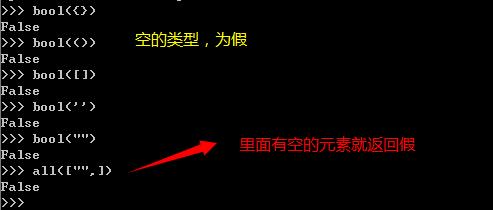Python学习笔记 之 函数
Posted 雨纷纷草木深
tags:
篇首语:本文由小常识网(cha138.com)小编为大家整理,主要介绍了Python学习笔记 之 函数相关的知识,希望对你有一定的参考价值。
函数
函数式编程最重要的是增强代码的重用性和可读性
- 定义和使用
def 函数名(参数):
...
函数体
...
返回值
函数的定义主要有如下要点:
def:表示函数的关键字
函数名:函数的名称,日后根据函数名调用函数
函数体:函数中进行一系列的逻辑计算
参数:为函数体提供数据
返回值:当函数执行完毕后,可以给调用者返回数据
举例:
1 def mail(): 2 n = 123 3 n += 1 4 print(n) 5 mail() 6 f = mail 7 f()
结果:
124
124
1-1 返回值
函数是一个功能块,该功能到底执行成功与否,需要通过返回值来告知调用者。
1 def show(): 2 print(\'a\') 3 return [11,22] 4 print(\'b\') 5 show()
结果:
a
1-2 参数
函数中有三种不同的参数:
- 普通参数
- 默认参数
- 动态参数
普通参数
1 def show(a1,a2): 2 print(a1,a2) 3 4 show(11,22)
结果:
11 22
默认参数:默认参数需要放在参数列表最后
1 def show(a1,a2=99): 2 print(a1,a2) 3 4 show(11)
结果:
11 99
指定参数
1 def show(a1,a2): 2 print(a1,a2) 3 4 show(a2=123,a1=190)
结果:
190 123
动态参数
1 def show(*arg):# * - 接收参数并转换元组 2 print(arg,type(arg)) 3 4 show(1,56,78,8979)
结果:
(1,56,78,8979) <class \'tuple\'>
1 def show(**arg): # ** - 接收参数并转换字典 2 print(arg,type(arg)) 3 4 show(n1=78,uu=123)
结果:
{\'uu\': 123, \'n1\': 78} <class \'dict\'>
1 def show(*arg1,**args):# 一个*的在前,两*在后 2 print(arg1,type(arg1)) 3 print(args,type(args)) 4 5 show(12,34,34,54,n9=33,n2=99)# 一个*的在前,两*在后
结果:
(12, 34, 34, 54) <class \'tuple\'>
{\'n2\': 99, \'n9\': 33} <class \'dict\'>
1 def show(*arg1,**args):# 一个*的在前,两*在后 2 print(arg1,type(arg1)) 3 print(args,type(args)) 4 5 l = (11,22,3,4) 6 d = {\'n1\':89,\'k1\':\'hello\'} 7 show(l,d)
结果:
((11, 22, 3, 4), {\'k1\': \'hello\', \'n1\': 89}) <class \'tuple\'>
{} <class \'dict\'>
很明显,结果不是我们想要的。关键是如果我们使用show(l,d)
那么和我们使用show(1,56,78,8979) 没有什么区别。所以,为了解决这种冲突问题,只需要在 l 前加一个*,在 d 前加两个 * 即可:
1 def show(*arg1,**args):# 一个*的在前,两*在后 2 print(arg1,type(arg1)) 3 print(args,type(args)) 4 5 l = (11,22,3,4) 6 d = {\'n1\':89,\'k1\':\'hello\'} 7 show(*l,**d)
结果:
(11, 22, 3, 4) <class \'tuple\'>
{\'n1\': 89, \'k1\': \'hello\'} <class \'dict\'>
符合我们的要求。
动态参数实现字符串格式化:
1 s1 = "{0} is {1}" 2 ret = s1.format(\'Young\',\'handsome\') 3 print(ret)
结果:
Young is handsome
1 s1 = "{0} is {1}" 2 l = [\'Young\',\'handsome2\'] 3 ret = s1.format(*l) 4 print(ret)
结果:
Young is handsome2
1 s1 = \'{name} is {value}\'# 字典这里就不是{0}、{1}了,而是用{key}、{value} 2 ret = s1.format(name=\'Young\',value=\'handsome\') 3 print(\'第一:\',ret) 4 5 s2 = \'{name2} is {key}\' 6 d = {\'name2\':\'Young\',\'key\':\'smart\'} 7 ret = s2.format(**d) 8 print(\'第二:\',ret)
结果:
第一: Young is handsome
第二: Young is smart
2. 内置函数

any : 只要有一个是真的就是真的

ord 和 chr配合使用


chr ord random.randint 可以生产验证码
enumerate

eval

map

filter
1 li=[1,22,33,45,74,788] 2 def func(num): 3 if num>33: 4 return True 5 else: 6 return False 7 n = filter(func,li) 8 print(list(n))
结果:
[45, 74, 788]
将列表中大于 33 的元素拿出来
以上是关于Python学习笔记 之 函数的主要内容,如果未能解决你的问题,请参考以下文章